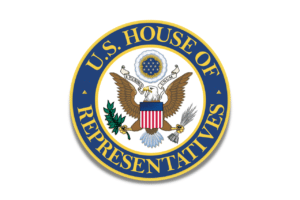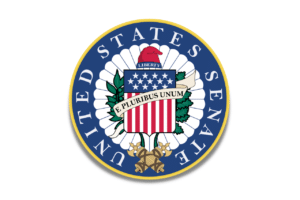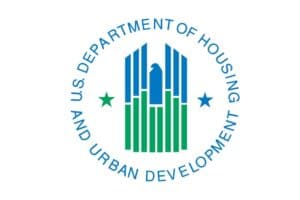On Monday, December 21, Congress passed a sweeping $1.4 trillion package to fund the government through September 30, 2021 plus $900 billion in Coronavirus aid. Many, many thanks to our members and partners who kept up the drumbeat all year long to get important housing priorities included in the bill. This was truly a team effort and everyone’s voice played a critical role. Thank you! Please take a moment to say thank you to your own elected officials who voted for the bill (Senate Roll Call Vote, House Roll Call Votes Parts 1 & 2)! The bill still needs to be signed by the president, who, at time of publication, is threatening to veto it. Both chambers passed the bill with a veto-proof majority, legislatures may have to come back to override the president’s veto as the final act of the 116th Congress.
In addition to the measures outlined below, the bill includes an extension of the Centers for Disease Control and Prevention (CDC) eviction moratorium through January 31, 2021.
HUD/USDA Appropriations
| HUD & RD Housing Programs (In millions) |
FY20 Enacted | FY21 President | FY21 House | FY21 Senate | FY21 Enacted |
| Tenant Based Rental Assistance | 23,874 | 18,833* | 25,739 | 25,516 | 25,777 |
| Public Housing Capital Fund | 2,869 | 0 | 3,180 | 2,923** | 2,942^^ |
| Public Housing Operating Fund | 4,549 | 3,572 | 4,649 | 4,517** | 4,864^^ |
| Choice Neighborhoods Initiative | 175 | 0 | 250 | 100 | 200 |
| Hsg. Opp. for Persons with AIDS | 410 | 330 | 430 | 410 | 430 |
| Community Development Fund | 3,425 | 0 | 3,525 | 3,455 | 3,475 |
| HOME Investment Partnerships | 1,350 | 0 | 1,700 | 1,375 | 1,350 |
| Self-Help Homeownership Opportunity | 10 | 0 | 10 | 10 | 10 |
| Homeless Assistance Grants | 2,777 | 2,773 | 3,415 | 2,951 | 3,000 |
| Rental Assistance Demonstration | 0 | 100 | 0 | 0 | 0 |
| Project-Based Rental Assistance | 12,570 | 12,642 | 13,451 | 13,403 | 13,465 |
| Hsg. for the Elderly (202) | 793 | 853 | 893 | 853 | 855 |
| Hsg. for Persons w/Disabilities (811) | 202 | 252 | 227 | 237 | 227 |
| Section 515 Rental Housing Direct Loans | 40 | 0 | 40 | 40 | 40 |
| Section 521 Rental Assistance | 1,375 | 1,450*** | 1450^ | 1,410 | 1,410 |
Source: National Low Income Housing Coalition https://nlihc.org/sites/default/files/NLIHC_HUD-USDA_Budget-Chart.pdf
Tax Provisions
The much-talked-about minimum four percent LIHTC is just about finally real! A special thanks to the members of the ACTION Campaign and the Affordable Housing Tax Credit Coalition who helped lead the industry advocacy efforts and to everyone who successfully lobbied to make the case on why this should be included in the COVID relief package! The four percent rate will apply prospectively to deals placed in service after December 31, 2020 and be financed by bonds issued after December 31, 2020. It remains to be determined what exactly issued means and the affordable housing stakeholder community will need to develop consensus over the coming weeks.
The bill authorizes disaster credits in qualified disaster zones to be determined by the president within 60 days of enactment of the bill. Novogradac and Co. estimated of disaster tax credits for eligible states:
| States with (Non-COVID-19) Major Disaster Declarations |
State Population |
Disaster County Population |
2021 Disaster Authority Estimate |
Disaster LIHTC Allocation % of 2020 State Celling |
| Alabama | 4,903,185 | 673,077 | $2,355,770 | 17.08% |
| California | 39,512,223 | 23,069,525 | $80,743,338 | 38.5%* |
| Florida | 21,477,737 | 962,143 | $3,367,501 | 5.57% |
| Iowa | 3,155,070 | 1,235,213 | $4,323,246 | 48.72% |
| Louisiana | 4,648,794 | 1,454,820 | $5,091,870 | 38.94% |
| Michigan | 9,986,857 | 339,154 | $1,187,039 | 4.23% |
| Mississippi | 2,976,149 | 211,608 | $740,628 | 8.85% |
| Oregon | 4,217,737 | 1,805,895 | $6,320,633 | 53.28% |
| Puerto Rico | 3,193,694 | 1,053,857 | $3,688,500 | 41.06% |
| South Carolina | 5,148,714 | 795,267 | $2,783,435 | 19.22% |
| Tennessee | 6,829,174 | 1,394,960 | $4,882,360 | 25.42% |
| Utah | 3,205,958 | 1,515,918 | $5,305,713 | 58.84% |
| Total | $120,790,030 | |||
| 10-Year Stream | $1,207,900,295 | |||
| *This percentage includes the $98 million in Disaster Authority originally authorized for the 2017-18 wildfires. | ||||
Source: Novogradac & Co. https://www.novoco.com/sites/default/files/thumbnails/image/disaster-declarations-non-covid-12212020-v3.png
The New Markets Tax Credit is reauthorized for another five years from 2021 through 2025 and received increased funding at $5 billion each year for a total of $25 billion, the largest extension in the history of the credit.
$25 Billion in Rental Assistance
We’re excited to see many of the asks from our rental assistance letter included in the legislative text, including the very mechanism by which the funds will be deployed (via Treasury), the ability for landlords to apply on behalf of their residents and limiting devolution of funds to jurisdictions with a population of more than 200,000. Thank you to the many NH&RA members who contributed to the development of our priorities.
Landlords are able to apply on behalf of their residents, with their consent, for the $25 billion in assistance. Each household is eligible to receive up to 12 months of assistance and the bill gives grantees the discretion to increase assistance to up to 15 months. The assistance can be used both retroactively and prospectively for rent, rental arrears, utilities and home energy costs, utility and home energy arrears and related housing expenses.
Households making 80 percent or less of area median income (AMI) are eligible to receive the rental assistance, with a priority for households making 50 percent of AMI or less or those who have been unemployed for at least 90 days. Households must be able to demonstrate a risk of homelessness or housing instability, and have one or more household members who qualifies for unemployment benefits or experienced financial hardship due to the pandemic. Grantees may also develop additional eligibility criteria.
The funds will be deployed to the states through the Treasury and will likely go to state housing finance agencies to be deployed. The legislative text also includes a provision that the funding could further devolve from the states to jurisdictions with a population of more than a half million. See below for estimates on how much each state will receive:
- Alabama $326,387,000
- Alaska $200,000,000
- Arizona $484,518,000
- Arkansas $200,884,000
- California $2,630,186,000
- Colorado $383,338,000
- Connecticut $237,328,000
- Delaware $200,000,000
- District of Columbia $200,000,000
- Florida $1,429,695,000
- Georgia $706,763,000
- Hawaii $200,000,000
- Idaho $200,000,000
- Illinois $843,517,000
- Indiana $448,139,000
- Iowa $210,022,000
- Kansas $200,000,000
- Kentucky $297,397,000
- Louisiana $309,453,000
- Maine $200,000,000
- Maryland $402,439,000
- Massachusetts $458,809,000
- Michigan $664,789,000
- Minnesota $375,410,000
- Mississippi $200,000,000
- Missouri $408,546,000
- Montana $200,000,000
- Nebraska $200,000,000
- Nevada $205,035,000
- New Hampshire $200,000,000
- New Jersey $591,255,000
- New Mexico $200,000,000
- New York $1,294,953,000
- North Carolina $698,154,000
- North Dakota $200,000,000
- Ohio $778,101,000
- Oklahoma $263,401,000
- Oregon $280,759,000
- Pennsylvania $852,182,000
- Rhode Island $200,000,000
- South Carolina $342,731,000
- South Dakota $200,000,000
- Tennessee $454,593,000
- Texas $1,930,151,000
- Utah $213,409,000
- Vermont $200,000,000
- Virginia $568,179,000
- Washington $506,896,000
- West Virginia $200,000,000
- Wisconsin $387,578,000
- Wyoming $200,000,000
- Puerto Rico $325,000,000
- American Samoa, Guam, Northern Mariana Islands and Virgin Islands $75,000,000
- Tribal Areas $800,000,000
Source: National Low Income Housing Coalition https://nlihc.org/sites/default/files/Estimated-Coronavirus-Relief-Fund-Allocations.pdf
General COVID Relief
The bill also provides another round of stimulus payments of up to $600/$1,200 for individuals and couples making less than $75,000 and $150,000, respectively. Households are also eligible to receive up to $600 per dependent.
The expanded federal unemployment compensation is reinstated at $300 per week through March 14 and extends the maximum number of weeks to 50.


